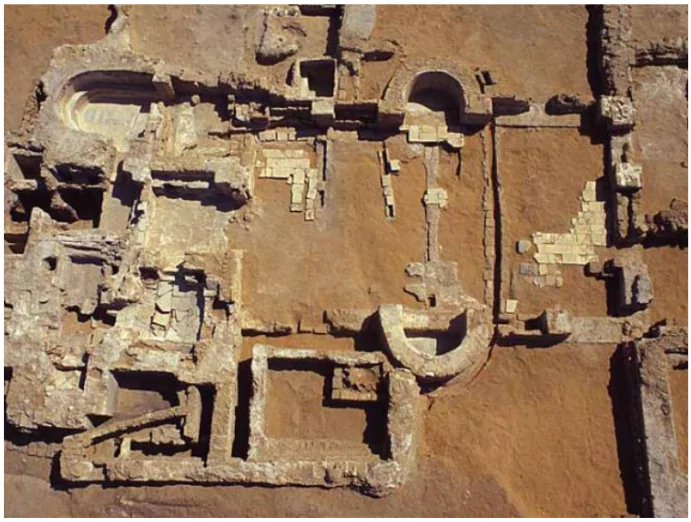During its 46th session in New Delhi, the World Heritage Committee (WHC) resolved to add the Palestinian site of Tell Umm Amer to both the UNESCO World Heritage Site List and the List of World Heritage in Danger.
World Heritage Committee (WHC)
- This committee is a part of UNESCO.
- It is responsible for selecting sites for the UNESCO world heritage list.
- It also oversees the world heritage fund and provides financial assistance to state parties when requested.
- This committee meets once in a year.
|
Historical Background
- The site is an ancient Christian monastery established in the fourth century.
- Founder: Founded by Hilarion the Great (291-371 CE), a prominent figure in Palestinian monasticism.
- Early Life: Hilarion became a monk at age 15 and attracted followers due to his reputed miracles.
Enroll now for UPSC Online Classes
About Tell Umm el-‘Amr

- This site is situated in the Nuseirat refugee camp, Deir al-Balah Governorate, Gaza Strip, Palestine.
- Located about 5.28 miles (8.5 km) south of Gaza City.
- The site is near the Mediterranean coast, approximately 1,000–2,000 feet from it.
- Surrounded by palm groves to the east and southeast, bordering Deir al-Balah.
Site Features
- Includes the Monastery of Saint Hilarion and other religious buildings such as a church and cloister.
- Contains facilities for monks like dormitories and various rooms.
- Features a hotel complex and baths likely used by pilgrims.
- The monastery is dedicated to Hilarion of Gaza.
- Nominated as a UNESCO World Heritage Site.
- UNICEF Listing:
-
- Description: Referred to as “the first monastic community in the Holy Land”.
- Role: Recognized as a significant hub for religious, cultural, and economic activities.
Saint Hilarion Monastery
- Location and Foundation:
- Situated at Tell Umm el-‘Amr, Gaza Strip, Palestine.
- Founded around 340 CE by Hilarion, a key figure in Palestinian monasticism.
- Features:
- Includes five churches, bath complexes, mosaics, and a large crypt.
- Originally a thriving religious site.
- History and Preservation: The archaeological remains cover over four centuries, from Hilarion’s time to the Umayyad period.
- Abandoned after a 7th-century earthquake.
- Rediscovered by archaeologists in 1999.
- Listed on the World Monuments Watch in 2012.
- Awarded “provisional enhanced protection” by UNESCO in December 2023.
- Added to the List of World Heritage in Danger in July 2024 due to damage from ongoing conflicts.
- Importance: Described as one of the largest monasteries in the Middle East.
|
Current Status of Tell Umm Amer
- Need for Protection:
- Damage from Conflict: Ongoing conflicts have severely damaged many sites in the Gaza Strip, including Tell Umm Amer.
- Impact on Cultural Sites: As of February 2024, 207 archaeological and cultural sites, including mosques, churches, museums, and archives, have been destroyed or heavily damaged, according to Mahmoud Hawari of the Institute of Palestinian Studies.
- Importance of UNESCO Inclusion:
- UNESCO’s Role: Tell Umm Amer’s inclusion in UNESCO’s World Heritage Site List and the List of World Heritage in Danger is crucial for its protection.
- World Heritage Convention: This 1972 convention obliges member states to identify, protect, and preserve World Heritage sites and prohibits actions that could damage them.
- International Protection:
- Enhanced Protection: In December 2023, UNESCO granted ‘provisional enhanced protection’ to Tell Umm Amer under the 1954 Hague Convention and its Second Protocol.
- Assistance Mechanisms: Being listed as a World Heritage site in danger allows for enhanced international technical and financial support to protect and rehabilitate the site.
Check Out UPSC NCERT Textbooks From PW Store
![]() 31 Jul 2024
31 Jul 2024

